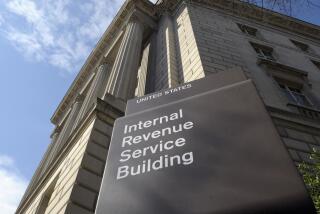The nefarious IRS attack on your local optometrist

Optometrists and opticians must have the lousiest lobbyists in Washington. How else can one explain the brutal unprovoked attack on their business launched the other day by the Internal Revenue Service?
The IRS didn’t literally attack the eyewear business, of course. But a new IRS regulation is likely to cut way down on an end-of-year frenzy at optical counters nationwide, by eliminating the need to spend balances in tax-deductible healthcare accounts before they’re forfeited every Dec. 31.
The accounts are flexible spending accounts, or FSAs. The regulation allows taxpayers to roll over up to $500 of their annual FSA balances to the following year. FSAs are quite useful benefits offered by many employers that allow workers to set aside a sum from their pre-tax wages (the maximum will be $2,500 next year) to pay out-of-pocket medical expenses. These include insurance deductibles, copays, acupuncture sessions and, yes, eyeglasses and contact lenses. Since the money is pre-tax, the government is effectively subsidizing those expenses.
The problem is that FSAs operate on a use-it-or-lose-it basis. You have to estimate each year what your out-of-pocket expenses will be for the coming year. Until now, if you guessed wrong and your expenses came in much lower, your unused balance went back to your employer. This has led many workers to shun FSAs. As my colleague Chad Terhune reported Thursday, 86% of large employers offer FSAs, but only 23% of their workers participate.
Those that do have often faced the end-of-year dilemma of how to spend down their balance. Before this year, they could stock up on over-the-counter medicines, which meant households brimming with cough syrup. But that option was tightened up for 2013. Health economist Uwe Reinhardt wrote that one year he and his wife solved the dilemma by scheduling his-and-her Christmas Eve colonoscopies, which seems a long way to go for the purpose. About a quarter of all FSA owners forfeit some money every year.
There aren’t good figures on this, but the most popular spending tactic appears to be the purchase of eyeglasses and contacts. (That’s the option I’ve often chosen.) It’s convenient, at least: Most people needing glasses already have a valid prescription or can get one with a simple office visit; buying a spare pair of glasses or a new pair of sunglasses seems a reasonable expense; and at today’s prices a fashionable frame can eat up a couple hundred bucks or more. The vision care industry knows where its bread is buttered, so around the end of the year it floods the zone with websites and ads reminding people that its wares are FSA-eligible.
But a lot of this is simply wasteful spending that undermines the purpose of the FSA, which is to give people a break on legitimate healthcare costs. So the IRS rule allowing $500 to escape the use-it-or-lose-it rat hole is overdue. The sum should cover almost all forfeitures, which means it will encourage more people to take advantage of FSAs.
One glitch is that the IRS has left it up to individual employers to decide whether to allow the rollover for their own employees; since they get to keep the forfeited sums, there’s an incentive to deny employees the benefit (though you would have to be some kind of cheapskate employer to do so). Another flaw is that the IRS ruling comes so late in the year--open enrollment periods for most big employers are about to start, so their FSA policies have already been written for 2014. But 2015 is another year. Let’s hope it brings more FSA freedom, more usage, and fewer cheesy eyeglass frames useful only for sucking up excess cash.
More to Read
Inside the business of entertainment
The Wide Shot brings you news, analysis and insights on everything from streaming wars to production — and what it all means for the future.
You may occasionally receive promotional content from the Los Angeles Times.











